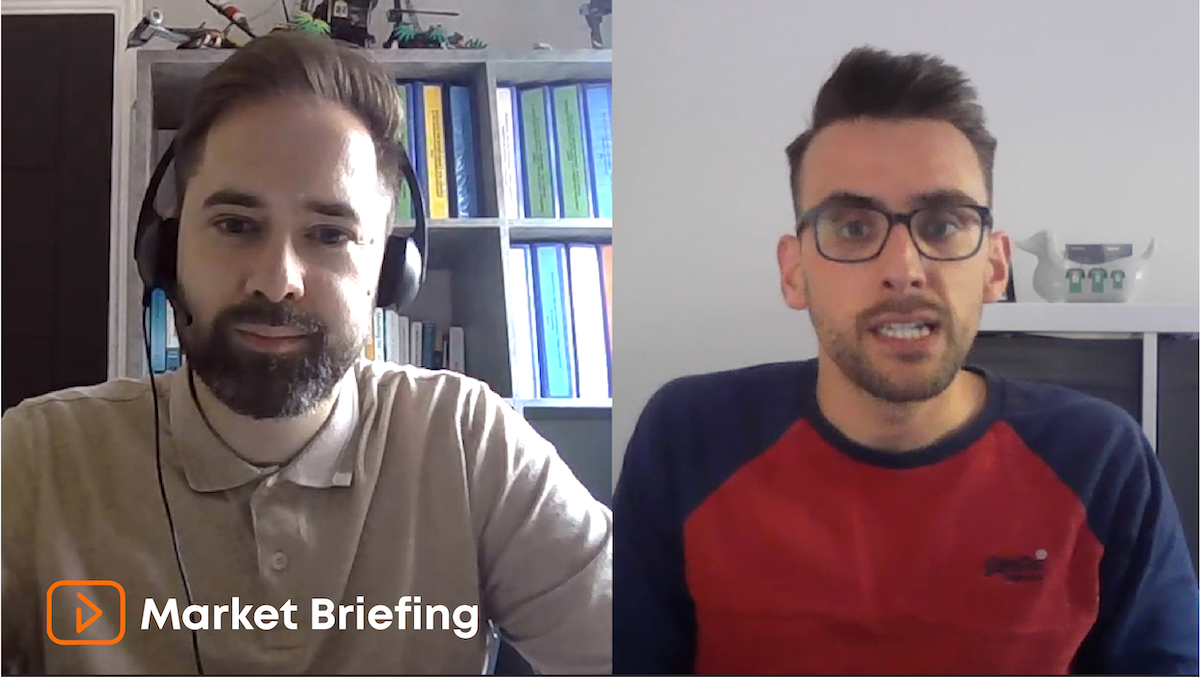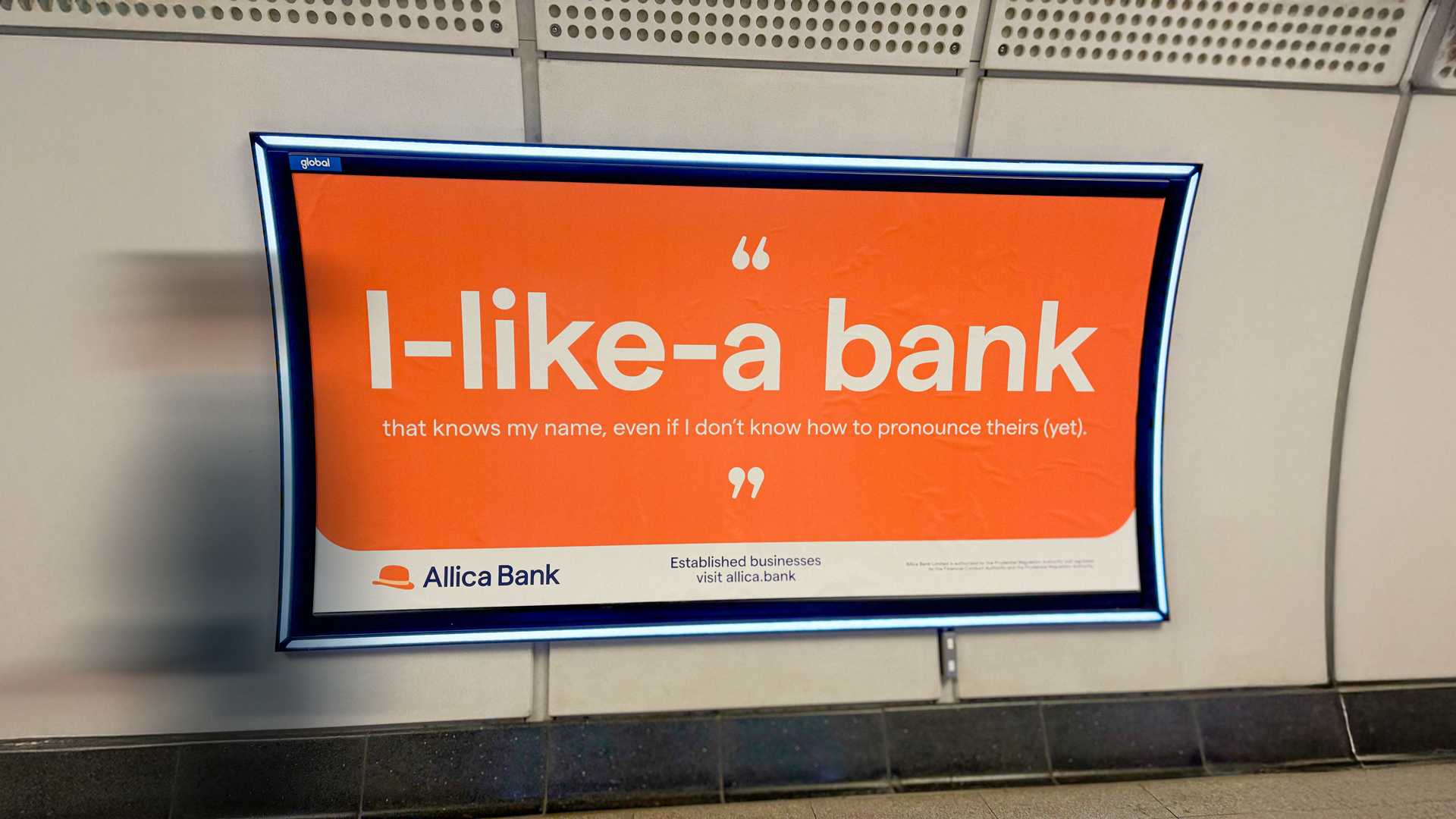With 12 consecutive base rate rises since December 2021, the Bank of England’s best efforts to curb inflation have certainly churned up the lending and saving markets.
It’s a highly fluid situation and many commentators expect further rises in the coming months, but a resultant trend that shows no sign of abating is of more movement within the current account market. After a decade of low interest rates, shopping for the best business current account has suddenly become a lot more meaningful — and valuable.
Accountants are telling us they’re seeing a big increase in current account enquiries from their clients, which is why we wanted this month’s Market Briefing to add some valuable context and insight.
This Market Briefing is hosted by Matt West (Relationship Manager in the South West), who is joined by Gareth Anderson, Allica Bank’s Head of Business Management. Gareth’s remit is broad, but especially relevant to this conversation is his role in leading our current account outreach teams. A lot of his day is spent “talking to customers about our current account proposition and, crucially, how we help SMEs to make their money go further.” The perfect person for this edition, then!
Contextualising current accounts: decades, rates, and COVID
Before getting into the specifics of current accounts, Gareth highlighted that “the market is very different now to where it was even a few years ago.”
“A 5% base rate is, for a lot of people, terrifying. We’ve had rock bottom interest rates for a long time, so seeing them this high is a shock to the system. The reality is, going back to before the financial crisis, interest rates of 4 or 5% were pretty normal. Going back to the late-80s/early-90s, they were as high as 14-15%.”
Putting the last ten years into a wider context, it becomes clear that, “for savers, a market hasn’t really existed for a long time as borrowing has been so cheap. Businesses with excess liquidity and surplus cash had slim pickings to get a good return on those savings.” Nowhere has that been truer than with current accounts.
Gareth also wanted to add the context of COVID, which “placed banks under huge strain, having provided huge amounts of government-backed lending to support businesses. In the space of one year, banks completed 10 years’ worth of lending.”
Out of nowhere, lending and saving exploded into life.
Why it’s proving so difficult to open a current account
The context of COVID is especially relevant to the current account market today. Gareth explained that banks had to repurpose their teams to make those 10 years of lending happen. COVID necessitated a huge reallocation of resources.
“Those who might have once worked in, say, customer due diligence or new customers and accounts were repurposed to government lending projects.”
“That led to the start of a steadily increasing challenge for businesses and accountants.” Accountants, either as customers themselves or through their clients, “will know just how hard it has been for businesses to open up a bank account.”
“We hear horror stories of six, eight, or even 20 weeks to open an account for a business that's already banking with that particular bank.”
Knowing where to go for faster progress on opening an account, or having a strong relationship with a bank, can now make a material difference to a client's operations.
What to look for when searching for a current account
For business owners and accountants whose clients are in the market for a new current account, Gareth suggested three key areas to prioritise:
1. Convenience and speed
“SME owners make plans quickly and, once they make plans, they want to execute them quickly, too. The last thing they want is being held up by something as seemingly easy as having a basic bank account.”
“If you are looking to trade with a new customer and want a bank account to support that, only to hear that it’s going to take six to eight weeks… that's going to be a real frustration.”
2. The size of the business and their needs
“Every business owner wants different things from their bank.” For us at Allica Bank, we’re finding that many of our prospective clients “really like the idea that every new current account customer has a dedicated relationship manager.”
The surprising truth, however, is that “a lot of banks right now are retrenching from relationship management models because of costs. An SME, perhaps too big and too sophisticated in its needs to be supported within a retail bank, but too small to be supported within a corporate bank, simply falls between the cracks.”
Having personalised support and a genuine relationship is so important “because running a business can be an incredibly lonely place. There are always challenges, headwinds, things to be grappled with. Just knowing that somebody is on the end of the phone to offer some guidance or support is hugely important.”
3. The interest rates on offer
“If you're a business owner, anything that you can do to make your money work that little bit harder needs to be considered.” That has never been truer than in the turbulent conditions of the 2020s.
Gareth was eager to stress that “it's okay to work with multiple banks. There is this misconception that a customer works with their bank and only their bank, but we know that switching is challenging. We know that very few businesses actually feel confident to go away and move banking providers, but we've got to get more comfortable and confident to at least look around.”
“There are some great banks and challengers providing really compelling products and propositions.” Taking the time to purposefully seek them out could lead you to a great return.
Products to make your cash work harder
It was Gareth’s third point — that of interest rates and making cash work harder — that Matt wanted to explore further.
“Very few SMEs,” in Matt’s experience, “would have a treasury management policy, but they need that kind of perspective, assessing the minimum amount of cash needed for everyday use, in a rainy day pot with relatively easy access, and surplus that won't be needed for 6-12 months.”
Gareth added: “Banks have enjoyed the benefit of increasing lending costs, but have been slow to pass on rate rises to savers.” He stressed that this hasn’t been a blanket refusal and that some products – especially fixed term and notice products – have grown relatively in line. The real shortfall has been in current and instant access accounts.
It’s understandable; “banks need to maintain certain levels of liquidity to fund lending and remain able to support businesses seeking to withdraw their funding at any given time. Hence why banks are happy to pay more to savers who are willing to lock funds away for fixed periods, as it gives them stability and certainty.”
“Now, what's interesting,” he noted, “is that challenger banks are challenging that tried-and-tested theory,” thanks in part to their much lower operating costs. “They're not laboured by huge branch networks and infrastructure costs, so they can pay higher amounts for instant access savings.”
Better rates for instant access “is going to be a relatively slow and protracted process.”
What accountants can do for their clients in a high interest market
Gareth set out something of a call to arms for accountants: “the days of accepting that there aren't options for savings and surplus cash are gone now. As accountants, you need to embrace the options that are out there and proactively work with your clients to guide them down those paths.”
“It might be as simple as a business that’s saving money for VAT in their current account moves it to an embedded savings wallet with a bank like Allica. That’s a quick and easy way to get something back for that cash position.”
Matt jumped in to add that: “the difference this can make can be substantial.” Take Allica’s 3.5% AER instant access Savings Pot, for example. For every million pounds you save, you’ll earn an additional £35,000 in interest income over the course of 12 months. “That’s a substantial sum of money; it's an extra member of staff or new kit for the business in that business's back pocket.” That can be game-changing.
“It's about being comfortable and confident to shop around and embracing the fact that it is a saver’s market now. There is no real excuse for not making businesses’ cash work a little bit harder for them — and we want to support you in doing that.”
“There is a need to think a little bit more strategically about how you manage your liquidity that extends beyond payment terms.”
You don’t have to switch current accounts to improve your savings
A final point that Gareth wanted to squeeze in was that “we talk to a lot of businesses that don't want to switch their current account. And we always tell them: ‘that's absolutely fine, you don't need to.’ And there's this moment of shock, as if they’re thinking ‘what are you trying to do then if you don't want my current account?’”
“You can go away and work with another bank and keep your current account with your existing provider. There might be too many barriers, too much cost, or perceived friction to make a full switch, but there's absolutely nothing stopping you from working with a bank to help you with your savings or your surplus cash.”
“Sometimes we just need to reframe the way we look at this problem — especially when, as I said earlier, we are firmly in a saver’s market right now.”
Ready to start exploring the market?
If this Market Briefing has got you thinking about current account options, one of our relationship managers will be happy to talk to you about it in more detail.
Sign up to Allica Bank’s Market Briefing for Accountants to get our upcoming videos and insight sent straight to your inbox.





